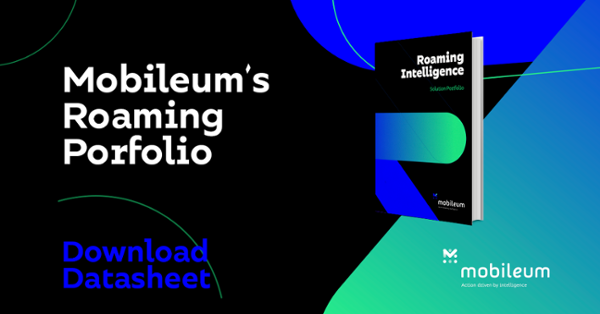Mobile roaming business represents 5-10% of service revenues for operators around the world. However, visibility into how roamers experience their journeys is often limited.
Having been in the roaming industry for over 20 years, I have often heard operators asking, ”how can we have a straightforward and clear numerical representation of roaming quality provided to our customers?”.
Although initially intended as a general question, the conversation would tend to evolve to various Classes of Subscribers, and especially to their VIP customers roaming experience.
Although the “Holy grail’ of network quality measurement will always be a subjective quality perception (experience) of each network subscriber, I am confident that managing expectations and educating customers are required prerequisites.
Mitigate churn
Approximately 20-40% of all trips are business-related trips, and more than 50% of business travelers work in companies with over 500 employees. Churn of one of those travelers often can lead to losing the entire enterprise customer. The quality of roaming is vital to business travelers, and timely awareness of potential partner network service issues is paramount to reducing the number of significant degradations of roaming service quality and the overall roaming experience. The prerequisite for that is constant monitoring of your partner network quality performance and, if possible, implementation of AI machine learning mechanisms to adopt to continuously changing environments in the global telecom ecosystem. Although knowledge of the problem is essential, the action that is taken is critical. Combining appropriate background actions triggered by insights from passive monitoring systems, such as automated Steer to Quality, has benefits in reducing customer churn while also reducing customer care efforts.
Another topic to consider is churn caused by the rise of eSIM technology, which can be reduced if excellent roaming service quality is provided, similar to a reduction in the number of silent roamers.
What about procurement?
Wholesale roaming negotiations are another aspect where a detailed understanding of the quality and usage provided is a powerful weapon. Roaming managers have a hard time negotiating the best possible roaming rates, usually based on usage and commitments. Still, this task is almost useless if the agreed quality is not met, and customers are not satisfied. Access to custom reports of partner networks quality performance and detailed insights on how customers are using telecom services can be of great help in adjusting those commitments and rates to reflect provided quality over the usage.
In the past, it was an analog task. But now I can see myself, negotiating rates in the WAS conference, pulling out my tablet, and in two clicks details of roaming quality (and usage) in the past six months are in front of my counterpart from a partner network. I am confident that I am getting that discount.
Issues will always happen
The aspects mentioned above will not magically resolve all challenges a telecom network is facing daily, and while those challenges are happening, one will need resources to meet them. The fast flow of information related to issues within the mobile network is crucial to mitigate those challenges quickly and appropriately through multiple departments. Starting from alerting, through visualization to detailed reporting, and empowered by per-network views of roaming combined with drill downs to specific subscriber event-tracing capabilities, will ease information access for multiple dimensions in resolving problems. Roaming managers should be able to access details regarding agreed quality (SLA) degradation quickly. Customer care teams have to understand each customer’s issues as soon as they call them, or ideally before customers call them. And Network Operations teams should be aware if detailed network KPIs are in line to what is expected. With today’s state-of-the-art roaming monitoring tools mentioned above, these capabilities should be available with just a few clicks.
Change is the only constant
Roaming customer experience monitoring tools have changed. I would stake that they will continue to evolve to a quality-based approach, especially with changes in regulations, more full acceptance of the eSIM concept, and broad deployment of new technologies such as 5G, VoWiFi, and others. Data usage will continue to grow significantly, so understanding patterns of how this data is used will be fundamental in providing the best possible quality for the end-customer. Bundles and plans based on usage will slowly become obsolete, while custom tailored bundles, based on targeted quality, will prevail. Early adopters will boost their brand awareness and will differentiate from their current competitors.
Although the COVID crisis has had a significant impact on the number of roamers, this is a perfect opportunity to learn how to move from traditional KPI measurements and to evolve to understand the roaming quality of your customer’s experience. Based on Roaming Customer Experience Management (RCEM) insights, operators are better equipped to re-negotiate their existing roaming agreements based on the quality their partners are providing.
Mobileum’s Roaming CEM solution assures experience from the ground up, from monitoring network health to measuring an individual roamer’s experience. But visibility needs to be paired with action. Only Mobileum can provide the ability to take action - to steer customers based on quality, to identify the root cause of issues faster, and provide leverage in negotiations with partner networks for improved quality.
If you want to learn more, please contact us.




Let Us Know What You Thought about this Post.
Put your Comment Below.